Should Greig Go To Put SIS Back On Its Toes?
By Selwyn Manning – Scoop Co-Editor
In an interview with the Listener magazine in 2003 the Inspector General of Intelligence and Security suggested new blood at the top of the SIS would be a good-thing, would “put the SIS back on its toes perhaps”.
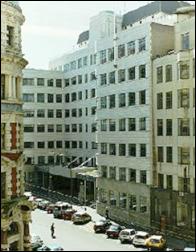
SIS Buildings at Defence House, Wellington.
Inspector General Laurie Greig’s comment was largely overlooked at the Auckland High Court in March 2004 where two of his Justice peers considered allegations of apparent bias, allegedly exposed via comments he made during the Listener interview potentially prejudicing the defence of Algerian refugee Ahmed Zaoui. See… Justices Express Concern Over Inspector General's Competency.
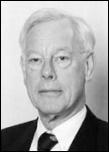 But Greig’s “put the SIS back on its
toes” comment offers a rare glimpse inside the SIS, via the
eyes of the public’s supposed watchdog. Considering the
agency is notorious for its secrets, this comment is worthy
of examination.
But Greig’s “put the SIS back on its
toes” comment offers a rare glimpse inside the SIS, via the
eyes of the public’s supposed watchdog. Considering the
agency is notorious for its secrets, this comment is worthy
of examination.
Image: Inspector General
Laurie Greig.
Does Greig’s comment suggest recent public criticism of the SIS is indeed well founded - that the SIS is operating well below standards essential to serve the national interests of New Zealand?
Let’s examine the agency’s recent performance to consider whether New Zealand’s intelligence, security and judicial reputations are being eroded?
It is the spectre of the SIS claiming Zaoui is dangerous that cloaks this case, it is the SIS’s conclusion that wraps it like a shroud. Deep within sits the analysis upon which the allegations rest. The quality of that analysis is protected from review by assurances of secrecy. It’s a paradox power-play between this nation’s cited international reputation, a resistance against being seen as a soft-touch, ensuring the nation’s security interests are protected, and the rights of one man to a fair judicial process who seeks protection from his home country that wishes to execute him.
The SIS recently came under academic criticism from former U.S. intelligence official and current Auckland University lecturer Dr Paul Buchanan who, with reference to the SIS’s performance on the Zaoui case, says the SIS has made a case against the refugee out of hearsay and vague attempts at deciphering truth. Buchanan says the SIS falls short particularly when information gathering on matters pertaining to the Middle East and Islamic issues.
The SIS has little if any expertise in the Middle East, Buchanan said: “As far as I can tell, this means that they are completely reliant on the original source for the veracity of the information. That makes them easy targets of wilful manipulation of intelligence data by the original source or one of the second-hand providers.”
The Zaoui case challenges the performance and professionalism of the SIS beyond that of any other case in recent times.
It is on the strength of speculative information that the SIS has deemed a legitimate refugee, Ahmed Zaoui, a security risk – consequently Zaoui has been held in New Zealand prisons for 16 months. What’s more, Zaoui has been imprisoned without knowing the detail of allegations held against him, nor allowed access to tapes made during Police and SIS interrogations.
It is this that makes the Zaoui case unique in New Zealand’s judicial history. And it is this imprisonment, due to undisclosed information held solely by the SIS, that questions whether the SIS is proficient enough to warrant the public’s confidence that it has got this case right.
Greig’s closing comment in the Listener interview would suggest the public’s confidence is deserving of reconsideration.
If there was one single person in New Zealand who ought to know whether the SIS is ‘on its toes’ it should be Greig. Greig has worked alongside the SIS since his appointment as Inspector General in 1996, this after he retired from High Court judge duties.
 The former High Court judge is known to have a
close, some say intimate, professional relationship with the
SIS and its director Richard Woods. Therefore, Greig’s
comment has offered insight into the standard of
professionalism within the SIS.
The former High Court judge is known to have a
close, some say intimate, professional relationship with the
SIS and its director Richard Woods. Therefore, Greig’s
comment has offered insight into the standard of
professionalism within the SIS.
Image:
Director of SIS Richard Woods
Since 1996 Greig’s duty has been to review cases where the operation of the SIS has come under criticism or required a judicial eye to ensure balance and the public interest is upheld. As the Inspector General - a position appointed by the Prime Minister under consultation with the Leader of the Opposition – Greig has been the nation’s watchdog over the watchers.
Let’s place Greig’s comment into context: a concluding question, tossed into the final moments of that interview by journalist Gordon Campbell, he asked Greig: “Do you have a fly fishing in Taupo kind of vision for yourself on the horizon?” In other words are you going to retire soon?
To which Greig replied: “Well I suppose so yes. I’m getting on. I’m not going to go on doing it forever obviously. There will be a time when I say right. And I think with anything ah, you shouldn’t be at it, too long. Somebody else should come in and do things.
“It’s a good idea in any sort of office like that, to have somebody come in with some new ideas. ‘Oh he did it that way? Okay I’m going to do it this way’. I think that’s useful to put the SIS back on their toes perhaps.”
It’s a great pity further questions did not follow his closing remarks in the November 2003 interview – certainly the door (closed but for a brief moment) will now be locked.
It would be reasonable to suggest Greig harboured doubts regarding the quality of evidence, and the methods used and/or relied on to gather in information against Ahmed Zaoui. After all Greig’s parting comment came after a gruelling interview peeling back the judicial layers of a very conservative man, his answers largely reflective on the justice complexities facing Ahmed Zaoui.
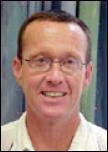 Let’s consider the
case at hand: The SIS is, as Auckland University
lecturer Paul Buchanan said, reliant on overseas ‘brother’
agencies to provide it with intelligence gathered by various
undisclosed sources. The source credibility and therefore
the accuracy of the information itself is at best unknown,
at worst completely fabricated, by nations peddling their
own spin agenda.
Let’s consider the
case at hand: The SIS is, as Auckland University
lecturer Paul Buchanan said, reliant on overseas ‘brother’
agencies to provide it with intelligence gathered by various
undisclosed sources. The source credibility and therefore
the accuracy of the information itself is at best unknown,
at worst completely fabricated, by nations peddling their
own spin agenda.
Image: Paul Buchanan,
Auckland University Lecturer
Certainly, information relied upon by the SIS in the Zaoui case, as displayed in the summary of allegations, released after the High Court ordered this, appears extremely light. Certainly without disclosure the quality of information cannot be determined in Court and therefore the SIS cannot be tested on its performance in serving the nation’s security interests.
Much of the material cited in the summary of allegations against Zaoui appeared extremely speculative and scenario driven. Is New Zealand’s Security Intelligence Agency littered with overly paranoid spooks?
The so called ‘casing’ video that the SIS claimed was highly suspicious, turns out to be nothing more than a home video taken while Zaoui travelled en-route to New Zealand via Thailand, to Laos to Vietnam. Zaoui’s son had saved up money and bought the video camera for Zaoui prior to him fleeing Malaysia.
The SIS claimed that while travelling, Zaoui filmed an oil company head office and explained his actions as ‘casing’ potential targets for future terrorist action.
However, on viewing the video it appears clear Zaoui is trying out the functions of the camera as he learns how to use it. The casing of an oil company building turns out to be little more than a building with an oil company billboard nearby. The segment is a few seconds long, the image rapidly zooms in and out as he works out how to use the zoom function on his new camera.
A reasonably minded person would expect a casing video to show access roads, basement entries, areas where potential terrorists could identify low-security entry points of a target building. Zaoui’s so called casing video displayed none of this.
For a glimpse of this video, see… www.spectator.co.nz/video/a-zaoui-homevid
Another video, this time filmed by the SIS is possibly worthy of more controversy.
I refer to a missing segment of a classified video tape taken during a joint SIS/Police seven-hour interrogation of Zaoui, where the SIS claim Zaoui made unsatisfactory answers to agent questions.
The videoed interview is referred to in the summary of allegations submitted on High Court order by the SIS director, Richard Woods. Within that document the SIS says: “He was interviewed by Immigration and Customs officers at the airport, detained, and interviewed by the Police. He was then interviewed jointly by Police and SIS officers, and later by an Arabic-speaking SIS officer alone.”
Unfortunately the SIS is refusing to disclose the video, the audio that accompanies it, or a separate audio recording that turned up only after it became public knowledge that the original video tape had a large audio segment missing.
The SIS directs suspicion over the “varacity” of one answer Zaoui made: “The interview with the Arabic-speaking SIS officer produced one point of security concern, relating to the veracity of an answer Mr ZAOUI gave, which cannot be disclosed without compromising classified security information which cannot be divulged.”
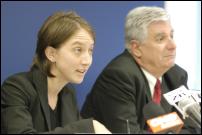 In a
letter to Zaoui lawyer Deborah Manning, Andrew Butler of the
Crown Law Office said: “When you made your initial inquiries
in relation to the videotape, the Security and Intelligence
Service looked at it for the first time, discovered that
there was a gap in the soundtrack on the video tape…
In a
letter to Zaoui lawyer Deborah Manning, Andrew Butler of the
Crown Law Office said: “When you made your initial inquiries
in relation to the videotape, the Security and Intelligence
Service looked at it for the first time, discovered that
there was a gap in the soundtrack on the video tape…
Image: Zaoui’s Defence Lawyers, Deborah
Manning and Rodney Harrison QC.
“In addition… a separate audio tape was created from the videotape sound track. That audiotape also, obviously, had a gap in the soundtrack. Today, it has been ascertained that in addition to the videotape and its sound track a separate audio recording of the interview was made.
“Upon ascertaining that fact, the Service immediately sought police assistance to compare the video soundtrack and the separate audio recording.
“A comparison between the two recordings showed that the audio recording covers the gap identified in the video soundtrack except for one two-minute gap while the separate audiotape was being changed.”
The letter displays a remarkable smokey area. What went on during the missing segment? Does the second audio recording - that suddenly materialised only after it is revealed that a large segment of the initial audio-track of the videotape is missing - contain information that would aid Zaoui’s defence? It would be interesting to thoroughly evaluate the audio section that covers the missing video-segment to ascertain its security and content. Transparency however is not forthcoming.
Furthermore, tainted information was added to the mix. Circumstances surrounding interrogations taking place in the first 48 hours of Zaoui arriving in New Zealand are dubious and clearly not of a standard assuring accuracy for judicial purposes.
I refer to information gathered without an interpreter present, nor experienced officers leading the process. The following detail has been gathered by the judicial body, the Refugee Status Appeals Authority.
Firstly, after arriving at Auckland International Airport between 10am to 11am, Zaoui found a police officer and indicated that he wished to seek asylum. He was taken to the Immigration Service’s Airport office, an Arabic interpreter was arranged, the interpreter arrived at 5pm. Zaoui had been travelling for 48 hours and asked if the interview could be delayed. This was declined. The interview lasted between one and two hours. A refugee status application form was filled in, and Zaoui signed the form.
Two hours later a Customs officer took Zaoui to the customs hall. His luggage was placed on a table in front of an office with mirrored windows. There he was left alone and watched for 30 minutes. His bags were then searched. During the search a Customs officer asked Zaoui questions. There was then no interpreter present, Zaoui struggled to understand the questions and therefore struggled to answer them. The customs hall was also noisy and there were many distractions.
Zaoui realised that the Customs officer was asking if he knew of the GIA and had been primed to ask questions along this bent. Zaoui again requested that an interpreter be present. This was denied.
Question 1: Zaoui was asked if he had ever fired a gun. He said yes, in his life he had fired approximately ten shots with a Kalashnikov. It was not noted that this was during Zaoui’s compulsory military training in Algeria.
Question 2: He was asked if he was a member of the GIA. Zaoui says he replied “FIS”. He verbally spelt out the letters: “F.I.S.” On investigation the Refugee Status Appeals Authority found what Zaoui said was “F.I.S”. Zaoui’s pronunciation of the letter ‘I’ is pronounced as an ‘E’ rhyming with Bee. What the Customs officer heard was phonetically “efeeyes”.
The Customs officer heard “efeeyes”.and noted that when asked if Zaoui was a member of the GIA, Zaoui “nodded and said yes”. The officer repeated the question and he says Zaoui again nodded and said yes. The entry in the notebook records: “Pax states that he is member of the GIA.”
This interview - that ended at 2am, 15 hours after Zaoui arrived in New Zealand (this after travelling for 48 hours), conducted without an interpreter, in a noisy hall, with a sole interviewer, who had never dealt with an asylum seeker before, who had been in the job only two months without any training in questioning or interrogations, the interview was not recorded, had only simple written notes taken of yes and no answers - set in train a series of information entries that alerted New Zealand authorities to believing they had a terrorist in their midst admitting to being a member of the GIA.
Once the interview concluded, the Customs officer alerted the Counter-Terrorism Unit, who then telephoned the SIS to “advise of developments”. Customs officials then quickly passed on Zaoui’s “admission” to New Zealand Police, New Zealand Interpol then issued an email to 12 foreign Interpol offices stating: “He (Zaoui) is a member of the Armed Islamic Group, which is known by the French acronym G.I.A.”
Then, like a flash-fire, news spread. Police relied on the “admission” when determining the custodial arrangements involving ‘extreme security’ at the Manukau District Court. The Police’s threat assessment to Crown Law stated Zaoui “admitted belonging to a terrorist group”. The New Zealand Herald reported: “… is believed to be a terrorist on the run with links to sinister organisations… name is linked to terrorist cells that have carried out bombings, beheadings and throat slitting from Algeria to France… The name crops up in connection with Osama Bin Laden’s suspected Southeast Asian army, and a book published this year links the name indirectly to suspects in the assassination of Afghanistan’s Northern Alliance leader, Ahmad Shah Massoud.”
Meanwhile, sitting in the background, building an “intelligence” net, was the SIS, possibly leaking information to the Herald – if it was not the SIS doing so, certainly the Police.
Should the SIS have revealed how Zaoui had for more than ten years strenuously denied ever having any involvement in the GIA? And, how odd it is that he supposedly had changed tack, admitting to an inexperienced Customs officer, that he indeed did belong to a terrorist organisation – all this while attempting to seek political asylum, a safe haven, in New Zealand?
When the Refugee Status Appeals Authority investigations sought clarity on the case via access to undisclosed information, the SIS was unwilling to oblige, it declined to provide the RSAA with relevant information as to whether or not Zaoui had any involvement in terrorist activity and/or other violence.
The RSAA commented: “The logic of the statutory scheme is not entirely clear” meaning it found it odd the SIS refused to co-operate.
Paul Buchanan says: “One of the problems of the SIS charter is exactly this. It does not have to release classified information, even in summary form, to other government agencies or the public if it is foreign derived. In a democracy that is a travesty.”
Should the SIS, an agency working for New Zealand’s national interests, also clarify information that is dubious, and not solely operate merely as a scenario-conduit for other overseas nations peddling their own specific intelligence-spin?
The SIS did disclose a “limited amount” of unclassified material – namely a Swiss Federal Justice press release and a chronology of events from when Zaoui lived in Belgium and Switzerland. The information was based entirely on open sourced material.
The RSAA cast scant regard for the SIS’s commentary on the FIS (Front Islamique du Salut) (Islamic Salvation Front of which Zaoui is a senior member) and the GIA (Groupe Islamique Arme) (the militant Algerian organisation of which Zaoui says he does not support).
RSAA: “It is unnecessary to analyse in any detail the SIS commentary on the FIS. Save to record that it is superficial and, to the extent to that it reflects the official biases of the Algerian regime, contentious. Its (SIS) attached chronology on the FIS is more interesting for its selective omissions than anything it says about the FIS.”
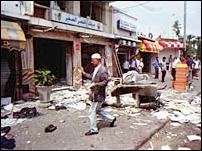 On the GIA, the Refugee Status Appeals
Authority says: “The SIS-compiled commentary on the GIA
consists of standard, unsourced information – three of the
five pages are a list of killings, bombings, massacres and
other such violent incidents attributed to the GIA between
1994 and 1998.”
On the GIA, the Refugee Status Appeals
Authority says: “The SIS-compiled commentary on the GIA
consists of standard, unsourced information – three of the
five pages are a list of killings, bombings, massacres and
other such violent incidents attributed to the GIA between
1994 and 1998.”
GIA Bombing in Algiers,
1996.
Amazingly, the SIS revealed not a “hint of any familiarity with the extensive material which considers the probable infiltration of the GIA by the Algerian military security particularly during the 1994-1998 period.”
The RSAA here refers to a raft of information that shows the GIA contains factions that operate in reality as shadow-terror-wings of the Algerian military government - where Algerian agents create a legend within the GIA, once masked inside, the agents unleash murder, abductions and other human rights abuses. The GIA then claims responsibility for the violence, the regime too levels responsibility for the acts onto the GIA, and with a spin-war-master-stroke the regime then claims rival democratically elected FIS MPs like Ahmed Zaoui to be affiliates of the GIA.
Buchanan: “They disseminate false information about these individuals that make them appear complicit in terrorist acts. Disinformation and misinformation campaigns are part and parcel of their operations. Worse yet, the Algerian secret services have infiltrated the GIA and committed numerous atrocities (including it is suspected in the Paris metro bombing in 96) in order to blame legitimate opponents of such acts. We must remember that the Algerian dictatorship is a pro-western secular regime that is an ally of the US and UK in the war on terror. when it staged the coup that deposed the FIS government-elect, no western government said anything critical, since all feared another Iran fundamentalist scenario. Thus the Algerian regime is countenanced by all of the major western powers in spite of its bad human rights record and unpleasant treatment of political opponents.”
Complexities surrounding this aspect of the Zaoui case are crucial – if the SIS is unwilling or unable to ascertain fact from fiction, spin from truth, this not only aids a potential travesty of justice, with respect to Ahmed Zaoui, but assists a vulnerability regarding New Zealand’s international reputation as a nation upholding the very highest principles of justice. Surely this deserves consideration by those overseeing the professionalism of the New Zealand Security Intelligence Service.
Should it be accepted that the SIS’s performance has been below par, with respect to international intelligence gathering involving the Zaoui case, an explanation for this may be its reliance on agencies like the French DST and that of the Belgium Security Service – organisations whose respective national interests interweave in true smoke and mirrors style with those of Algeria and its current military regime.
Buchanan: “France is Algeria's best patron, receives most of its Middle East intelligence from the Algerians and also is a preferred customer for its oil exports (Algeria is the 6th largest oil producer). Algeria receives military training and equipment from France. It is a very close, and unholy relationship.
“Both (the French and Belgium Zaoui trials) were overtly political trials, one occurring on the eve of an official state visit by the Algerian premier, that were trumped up in any event. The Belgian court found him guilty of illegal association on the basis of the fact that he and other FIS exiles had false documents when they entered the country, and the French court of appeal convicted him of charges that the Belgian court acquitted him of--in absentia. Anyone who knows how the French and Belgian courts operate with regard to political issues knows that this was a farce, and several respected international jurists have publicly stated so. Either way, his convictions were for petty offences, not major crimes, and no act of violence was mentioned in the indictments or convictions, so the Intelligence crowd has little to go on by way of tying him to a specific act of violence. Plus, neither of these countries want him extradited--only the Algerians do,” Buchanan said.
Again, it is upon this bias that the New Zealand SIS appears to rest its allegations against Zaoui – if this synopsis is incorrect then in the public’s interest let’s here it.
The withholding of information - kept hidden far from the public eye and that of judicial bodies like the RSAA - at every step of this case advances suggestions of apparent incompetence.
Re-enter Laurie Greig – the public’s watchdog charged with keeping the SIS “on its toes, perhaps”. Has Greig been able to keep the SIS on a professional leash?
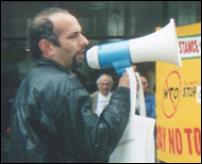 Greig too has been found to have
erred. To highlight: there was the intrusion by SIS agents
of Anti-GATTS academic Aziz Choudry’s home in the 1990s. At
the time, Choudry suspected the SIS had burgled his
home, the Police knew this to be so. Of course the
operation was kept secret until Choudry and fellow
Christchurch-based academic Dr David Small conducted their
own investigation, discovered enough evidence to pressure
the establishment. Greig was then called to review the SIS
operation.
Greig too has been found to have
erred. To highlight: there was the intrusion by SIS agents
of Anti-GATTS academic Aziz Choudry’s home in the 1990s. At
the time, Choudry suspected the SIS had burgled his
home, the Police knew this to be so. Of course the
operation was kept secret until Choudry and fellow
Christchurch-based academic Dr David Small conducted their
own investigation, discovered enough evidence to pressure
the establishment. Greig was then called to review the SIS
operation.
Image: Anti-GATTS academic, and
Regular Scoop columnist, Aziz Choudry. See Scoop article,
The Man Who Spooked The Spooks
The SIS claimed it was acting legally due to it believing Choudry was in possession of terrorist material. They rummaged through files, supposedly looking for terrorist paraphernalia. Of course, despite the SIS conducting a covert operation, entering Chourdy’s home, and in fact, operating as a highly paid bunch of thieves, no such material was found. Aziz Choudry is not a terrorist. His fight is one of intellectually challenging the ideological pursuit of neo-liberal economic theory and the global application of the same.
On review, Greig invstigated the operation and found the SIS invasion of Choudry’s home justifiable and proper. Choudry and David Small took the case to the Court of Appeal. Greig’s ruling was overthrown in favour of Choudry, the SIS operation was indeed found to be illegal, and the Government awarded Choudry $100,000 compensation. The New Zealand Government later created a law that permits the SIS, under conditions, to covertly enter a person’s home uninvited and to go about its clandestine ways.
Conclusion:
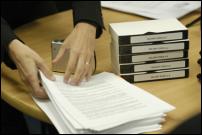 With respect to the
Ahmed Zaoui case – has the SIS wrongfully issued a Security
Risk Certificate against this Algerian refugee and
consequentially caused wrongful imprisonment in New Zealand,
to date, for 16 months? That question is currently pending a
review of the risk certificate – as to who or what will
conduct the review is currently subject to the outcome of a
High court apparent bias claim by Zaoui’s lawyers against
Greig.
With respect to the
Ahmed Zaoui case – has the SIS wrongfully issued a Security
Risk Certificate against this Algerian refugee and
consequentially caused wrongful imprisonment in New Zealand,
to date, for 16 months? That question is currently pending a
review of the risk certificate – as to who or what will
conduct the review is currently subject to the outcome of a
High court apparent bias claim by Zaoui’s lawyers against
Greig.
It is the spectre of the SIS claiming Zaoui is dangerous that cloaks this case, it is the SIS’s conclusion that wraps it like a shroud. Deep within sits the analysis upon which the allegations rest. The quality of that analysis is protected from review by assurances of secrecy. It’s a paradox power-play between this nation’s cited international reputation, a resistance against being seen as a soft-touch, ensuring the nation’s security interests are protected, and the rights of one man to a fair judicial process who seeks protection from his home country that wishes to execute him.
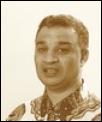 As New Zealand’s
former race relations conciliator, Gregory Fortuin said on
January 28 2004: “This is not a challenge to New Zealand’s
sovereign right to protect its borders, but an appeal to its
continued sense of fairness and reputation for justice. This
is bigger than Ahmed Zaoui. Any democracy is only as good as
to how it treats its most vulnerable and marginalised. Right
now Ahmed Zaoui is as vulnerable as they
come.”
As New Zealand’s
former race relations conciliator, Gregory Fortuin said on
January 28 2004: “This is not a challenge to New Zealand’s
sovereign right to protect its borders, but an appeal to its
continued sense of fairness and reputation for justice. This
is bigger than Ahmed Zaoui. Any democracy is only as good as
to how it treats its most vulnerable and marginalised. Right
now Ahmed Zaoui is as vulnerable as they
come.”
Officially, on March 23 2003, the then Minister of Immigration Lianne Dalziel issued a notice that she had made a preliminary decision to rely on the Security Risk Certificate made by the director general of the SIS, Richard Woods. Accompanying documents advised Zaoui and his lawyers that the Risk Certificate was issued on the basis of “classified security information” from which the director general had determined that Zaoui’s continued presence in New Zealand constitutes a threat to national security and that there are reasonable grounds for regarding him as a danger to the security of New Zealand.
 It may surprise
many to know, despite the former Minister of Immigration
Lianne Dalziel appearing so adamant that Zaoui ought to be
kept behind bars pending judicial proceedings - presenting
herself more like an obsessive spokesperson for the New
Zealand Immigration Service rather than a Minister of the
Crown - nether she, not the Prime Minister, nor the former
Leader of the Opposition Bill English (the latter cites
Zaoui must be deported) have been privy to the classified
information specific to the SIS’s allegations.
It may surprise
many to know, despite the former Minister of Immigration
Lianne Dalziel appearing so adamant that Zaoui ought to be
kept behind bars pending judicial proceedings - presenting
herself more like an obsessive spokesperson for the New
Zealand Immigration Service rather than a Minister of the
Crown - nether she, not the Prime Minister, nor the former
Leader of the Opposition Bill English (the latter cites
Zaoui must be deported) have been privy to the classified
information specific to the SIS’s allegations.
Paul Buchanan says: “I doubt that Mr. English has seen the whole picture, but instead has been provided scary summaries of possible terrorist links by Mr. Zaoui--and they could well be bogus. Just because intelligence comes from the US or UK does not mean that it is correct, since the intelligence capabilities in places like Algeria are limited as well--they depend on the Algerian government and France for most of what they get on that country, most often without independent confirmation.”
Yet, the Prime Minister Helen Clark, while in Nigeria during the CHOGM conference in December 2003, commented hypothetically that New Zealand could, should the Security Risk Certificate be upheld, perhaps deport Zaoui to another country where its own judicial system would consider the human rights aspects of his case.
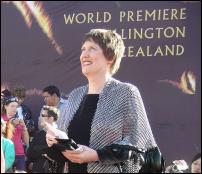 The Prime
Minister’s considered possible course has relevancy
considering the Zaoui case has exposed a major failing in
statutory process.
The Prime
Minister’s considered possible course has relevancy
considering the Zaoui case has exposed a major failing in
statutory process.
Without a process that assures a test of sound judicial standing, that considers the quality of information held by the SIS and the credibility of the source, there is arguably a large grey unknown area that displays a systematic failure in that New Zealand cannot balance national security interests with the rights of an individual, as in Zaoui’s situation, to a fair trial.
It appears, at that time, the Prime Minister was not prepared to risk New Zealand’s security interests, not necessarily because she felt assured Zaoui was a threat, but because there was no way to test the information held against him – therefore, hypothetically, the decision was weighing toward not wanting to risk the nation being exposed to a possible danger, rather than ensuring Zaoui’s right to refugee status in New Zealand and rightful judicial process be observed.
But this position has its critics: Gregory Fortuin: “No human being should be incarcerated without due process. We should all be afforded the principle of innocent until proven guilty. No one should ever be judged guilty without even knowing what the accusations are, never mind having the evidence tested in a court of law. It is “a monstrous failure of justice” (to quote Judge Steyn) to have the case reviewed by a Judge (Greig) who not only expressed his preconceived views prior to sitting in judgement, but would have been required to give an account in any country with a decent constitutional court for arrogantly doing the interview.
“The Refugee Status Appeals Authority is a credible New Zealand body that has done an excellent job in reviewing the Zaoui case. Their over 200-page decision speaks volumes of their diligent efforts – as opposed to the internet search and the reliance on those who boldly made statements about weapons of mass destruction by our so-called ‘intelligence service’.”
Buchanan agrees. He says besides being bungling amateurs, the SIS either had contempt for the Authority and did not believe that it would catch its inaccuracies, or it simply had nothing better to offer except the "secret" information held in reserve.
“But that could have been summarised and provided to the Authority without harming foreign sources, so it is unlikely that they have much else credible to offer. If anything, it was a stalling tactic while they searched for legitimate information against Zaoui,” Buchanan said.
Once the Zaoui case concludes it is expected a judicial review of the processes between Executive, Judiciary, and the SIS and its inspector general will be conducted.
In the meantime: Is justice being served? Are New Zealand’s national security interests being served? Arguably these questions can only be answered in the affirmative should we take Greig’s suggestion, stand him down and attempt to put the SIS “back on its toes, perhaps”.
Earlier:
It is important to note, the Refugee Status Appeals Authority has investigated Zaoui’s claims that he has been wrongfully labelled a danger. The RSAA found Zaoui to be a bona fide refugee and recommends he be released from prison.
Zaoui’s legal team, headed by Rodney Harrison QC, contend Inspector General Laurie Greig displayed apparent bias against Mr Zaoui’s claim for political asylum in New Zealand.
Should Justices Salmon and Harrison find Greig did display apparent bias, then the Executive (the Government) would likely appoint a substitute to conduct the review.
The National Security Risk Certificate review hearing has been suspended pending preliminary outcomes in the High Court (Auckland) and Court of Appeal (Wellington).
The Crown is appealing against Justice Hugh Williams’ December 2003 decision that the Inspector General must take the human rights dimension into account when determining whether the security Risk Certificate has been properly made.
Justice Williams had also instructed the SIS to hand over to Mr Zaoui and his legal team a summary of allegations it held against him. It did so in January 2004. See… Scoop reference… The allegations raise issues already dealt with, and deemed erroneous, by the Refugee Status Appeals Authority.
Mr Zaoui continues to seek access to a video and audio tape of a joint NZ Police/SIS seven hour interrogation of Ahmed Zaoui conducted on his arrival in New Zealand, in December 2002. Access is being denied.
Until January, Ahmed Zaoui had been held, without knowing the allegations held against him, in maximum security prison for 13 months (much of that time in solitary confinement).
Zaoui remains imprisoned at Mt Eden Prison, where doctors report his psychological state is deteriorating. It has been over 17 months since Ahmed Zaoui has been able to see or speak with his wife and children. They remain in hiding in Malaysia.
References:
Documents:
"Summary of Allegations" and reasoning of the Director of Security in making a Security Risk Certificate about Mr Ahmed Zaoui
1. Ahmed ZAOUI arrived in New Zealand on 4 December 2002, having attempted to destroy a false South African passport en route. He was interviewed by Immigration and Customs officers at the airport, detained, and interviewed by the Police. He was then interviewed jointly by Police and SIS officers, and later by an Arabic-speaking SIS officer alone.
2. In the joint Police/SIS interview Mr ZAOUI was questioned about the videotape he had made during his journey overland from Malaysia via Thailand and Laos to Viet Nam. The focus on places which are not obvious tourist sites but which are frequented by westerners, including an oil company building, tourist buses and an internet cafe, looked suspiciously like a "casing" video. His answers did not dispel security concerns. The videotape also shows what he said was a second visit to a mosque in Hanoi, likely to be frequented by Algerian diplomats. He had no satisfactory answer as to why, if (as he had said) he feared being discovered by Algerian security officers, be should twice visit a place where he might be recognised by Algerian diplomats.
3. The interview with the Arabic-speaking SIS officer produced one point of security concern, relating to the veracity of an answer Mr ZAOUI gave, which cannot be disclosed without compromising classified security information which cannot be divulged.
4. The Service instituted enquiries with overseas liaison partners about Mr ZAOUI's activities since he left Algeria. These enquiries confirmed that Mr ZAOUI:
* was twice declined refugee status in Belgium, in 1995 and 1996;
* was convicted in Belgium in 1996 of being a leader and instigator of a criminal association with the intention of attacking persons and property;
* having been released from custody, was issued with a ministerial order for home detention which limited his movements to the street in Brussels where he and his family lived;
* nonetheless left Belgium and entered Switzerland illegally in 1997;
* undertook activities in Switzerland which the Swiss government saw as endangering Switzerland's domestic and external security. The Swiss authorities therefore removed his fax, email and internet access;
* appealed to the European Court of Human Rights against this Swiss decision. The European Court considered his proceeding to be manifestly ill-founded and declared it inadmissible in full;
* was expelled from Switzerland to Burkina Faso in 1998;
* left Burkina Faso in 2000 and arrived in Malaysia;
* was convicted in absentia in France in 2001 of participation in a criminal group with a view to preparing terrorist acts.
5. These enquiries also produced classified information which provided background to the above public facts. Both the public facts and the classified information make it clear that there was not just a single source of information being repeated. Rather, the relevant authorities in each of the three countries carried out their own independent investigations into Mr ZAOUI's activities in their own countries and reached the conclusions reflected in the convictions and other decisions.
6. The Service discussed with the liaison partners concerned whether it would be possible to provide an unclassified summary or version of the classified information. The Belgians and Swiss agreed and this information was given to Mr ZAOUI's lawyers in May 2003.
* In essence, the Belgian unclassified information confirmed that Mr ZAOUI had been found to be a leader and instigator of a criminal association with the intention of attacking persons and property. It was not clearly established for what movement he was working.
* The Swiss Federal Council considered (unofficial translation) "the resumption of Mr ZAOUI's activity to be a potential threat to Switzerland's internal security. His polarising and provocative activity may lead to acts of violence, and even attacks, in Switzerland. In view of the international undertakings it has made, Switzerland can no longer tolerate the appearance of groupings which support, encourage or carry out, directly or indirectly, violent or terrorist activities. The intrigues by the leader of the FIS in Switzerland are such as to even affect our country's relations with foreign countries and thereby endanger Switzerland's external security."
7. On 20 March 2003 the Director of Security made a Security Risk Certificate about Mr ZAOUI, relying on definition (c) of security in the NZSJS Act 1969:
"(c.) The protection of New Zealand from activities within or relating to New Zealand that-
(i) Are influenced by any foreign organisation or any foreign person; and
(ii) Are clandestine or deceptive, or threaten the safety of any person; and
(iii) Impact adversely on New Zealand's international well-being."
8. His reasoning is as follows, in the form of comment on each section of the definition. It is based both on the publicly known security-related European decisions and convictions and related unclassified information and on classified security information which cannot be divulged.
* "The protection of New Zealand from activities within or relating to New Zealand that- "
It is reasonable to suspect that if permitted to settle in New Zealand Mr ZAOUI would in due course undertake, facilitate, promote or encourage activities like those of which he was convicted in Belgium and France and/or which the Swiss government decided endangered Switzerland's domestic and external security. His presence here would attract, both directly (people who wish to work with him) and indirectly (people encouraged to believe that New Zealand is a safe haven for people with his sort of record), other people likely to engage in activities of security concern.
* "Are influenced by any foreign organisation or any foreign person, and"
Mr ZAOUI is a foreign person. He has a long record of involvement with foreign persons and foreign organisations, including leadership. There is good reason to believe that any future activities he may undertake will be influenced by other foreign persons and/or by foreign organisations.
* "Are clandestine or deceptive, or threaten the safely of any person, and"
The activities of which be was convicted in Belgium and France were clandestine or deceptive or threatened the safety of persons. The Swiss government believed that his activity in Switzerland "may lead to acts of violence, and even attacks, in Switzerland". Activities of this kind in New Zealand, by Mr ZAOUI or by others attracted to New Zealand by his presence here, could threaten the safety of New Zealanders.
* "Impact adversely on New Zealand's international well-being."
As part of the international community it is New Zealand's responsibility to take its proper part in controlling, defeating and preventing activities of security concern, such as those of which Mr ZAOUI has been convicted in Belgium and France and for which he was deported from Switzerland. Consistent with this, it is a government objective to ensure that New Zealand is neither the victim nor the source of acts of terrorism or other activities of security concern, and to prevent New Zealand from being or becoming a safe haven for people who have undertaken, or may be intending to undertake, such activities.
If Mr ZAOUI, with his public record, were allowed to settle here, that would indicate that New Zealand has a lower level of concern about security than other like-minded countries. That would impact adversely on New Zealand's reputation with such countries and thus on New Zealand's international well-being.
If Mr ZAOUI, or other people attracted to New Zealand by his presence here, were to undertake, facilitate, promote or encourage activities of security concern, either in New Zealand or elsewhere from within New Zealand, the adverse impact on New Zealand's reputation and thus on its international well-being would be compounded
E R Woods Director of Security 27 January 2004
20 February 2004
Statement by Ahmed Zaoui’s Lawyer Deborah Manning on Release of Summary Of Accusations
ZAOUI
The reason we have called a conference and released the summary this morning is an unusual step however the Zaoui case is an unusual case. We have taken this step given that the Minister of Immigration has chosen to reveal the existence of the Director’s summary on several occasions and when she did so she inferred our silence on the summary was significant and that we thought the summary was of concern.
This week, Crown Law contacted us and advised that several Ministries had been contacted requesting the summary under the Official Information Act. We then met with Ahmed Zaoui and his clear instructions were that he had nothing to hide and for us to release the document in full.
Today we will give you the full summary, our submission to the Prime Minister and Minister of Immigration on the summary and a copy of a home video tape which Ahmed brought into New Zealand of his trip here.
SUMMARY OF ALLEGATIONS AND REASONING
The High Court ruled that Mr Zaoui must be provided with a summary of the allegations against him. The Director of security has chosen to issue that summary.
There is nothing in the summary of allegations that has not already been considered and comprehensively dealt with by the Refugee Status Appeals Authority.
The reasoning of the Director to classify Ahmed Zaoui as a security risk is wholly inadequate and baseless and when boiled down amounts to a fear of how New Zealand’s reputation could be affected.
Mr Zaoui has suffered through nearly 15 months of imprisonment without charge, 11 of those in solitary confinement and despite being granted refugee status is threatened with deportation to torture and death due to fear that New Zealand could be perceived as a “soft touch”.
We consider the National Security Risk Certificate in light of the RSAA decision to be wholly unjustified and we have written to the Prime Minister as Minister in Charge of Security and Intelligence and to the Minister of Immigration requesting that reliance on the security risk certificate is withdrawn.
Allegation 1: False passport We are very surprised to this as this has been dealt with before. As a recognized refugee Mr Zaoui cannot be penalized for using false travel papers. The Refugee Convention stipulates that refugees cannot be penalized for using false papers and the New Zealand Court of Appeal has also recognized this.
Allegation 2: Video tape This is a bizarre allegation. As will be obvious, Ahmed is neither and experienced nor competent videographer.
Ahmed filmed the video on his way to claim refugee status in New Zealand and it simply does not make any sense that he would bring in the type of video as suspected.
The question is: is this a casing video or a botched assessment of a badly made home movie – a viewing of the tape answers this question.
Allegation 3: SIS interview This allegation relates to an undisclosed question, an undisclosed answer and that it raises concerns for an undisclosed reason.
Ahmed was interviewed by a New Zealand SIS officer who learnt Arabic in Egypt. At times communication broke down between them due to the SIS officer’s Arabic and the SIS officer simultaneously wrote answers in English – a feat which our best interpreters cannot accomplish.
Allegations 4-6: European convictions These allegations related to France, Belgium and Switzerland. There is nothing new in these allegations and they have all already been comprehensively disposed of by the RSAA.
REASONING When boiled down, the Director’s reasoning is that if Ahmed Zaoui is allowed to stay, New Zealand could be considered as a “soft touch” by other countries and other people. It totally ignores New Zealand ’s already rigorous border controls.
The reasoning also overlooks the fact that Ahmed Zaoui’s treatment in New Zealand - 15 months of imprisonment without charge – 11 of those in solitary- could hardly be conceived as a soft touch.
The High Court made it clear that Mr Zaoui was to be provided a summary of the allegations and the basis on which they are made. We have no choice but to accept on good faith that this is a complete summary.


 Binoy Kampmark: Euphemistic Practices - The IDF, Killing Aid Workers And Self-Investigation
Binoy Kampmark: Euphemistic Practices - The IDF, Killing Aid Workers And Self-Investigation Gordon Campbell: On The Left’s Electability Crisis, And The Abundance Ecotopia
Gordon Campbell: On The Left’s Electability Crisis, And The Abundance Ecotopia Ramzy Baroud: French Contradictions | Macron's Palestine Play - Too Little, Too Late?
Ramzy Baroud: French Contradictions | Macron's Palestine Play - Too Little, Too Late? Martin LeFevre - Meditations: Easter Reflections
Martin LeFevre - Meditations: Easter Reflections Binoy Kampmark: Dotty And Cretinous - Reviewing AUKUS
Binoy Kampmark: Dotty And Cretinous - Reviewing AUKUS Ramzy Baroud: Beneath The Surface - Is The Trump-Netanyahu 'Unthinkable' About To Erupt?
Ramzy Baroud: Beneath The Surface - Is The Trump-Netanyahu 'Unthinkable' About To Erupt?